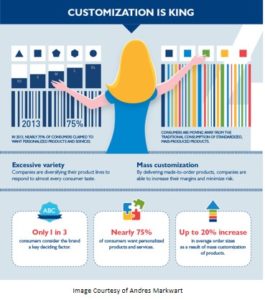3D Printing, Extend of effect on the Global Supply Chain
Since its inception, “Additive Manufacturing” or more commonly known as 3D Printing has taken the world by storm. Revolutionizing across different industries in ways and means that probably its closest competitor would have been the invention of the “Steam Engine”. In his 2012 State of the Union Address, President Obama even said, “3D Printing… has the potential to revolutionize the way we make almost everything.”
However the main areas of effect by this would probably be in the way that companies manufactures and delivers their components to their end customer. The invention of the internet has shrunk the geographical distance in the way businesses are being carried out now. Globalization has become a norm and businesses have manufacturing sectors all over the globe. With the integration of 3D printing, many of these global supply chain have been affected be it positively or negatively. In the following paragraphs, we shall examine what are the impacts both potential and those that have already occurred.
What is 3D Printing?
Designed as a tool to mainly aid in the area of prototyping, 3D Printing has come a long way since the 1980s. Unlike traditional manufacturing where vast amounts of waste are generated due to the subtractive nature of the methodologies employed. 3D Printing is an additive process where it involves sequential build-up of materials such as for instance, ABS thermoplastic, on top of one another in a continuous motion. After every successive layer has been completed, the final part produced is an intricate and detailed representation of a 3D CAD designer file part.
Over the years, there have been many advances in both 3D Printing technology as well as 3D Printing materials being employed in this additive process. These advances also bring about new applications being discovered, some of which, vastly affecting the global supply chain.
How is 3D Printing changing the global supply chain?
Till date, the concept of manufacturing has always been fixated on mass production and huge warehouse of stocks and spare parts. There has never been any game-changing technology that has brought about much improvements in both the speed, process and efficiency of production. People have always wondered, “what if” something like that were to happen? Today professional 3D printer has removed this “what if” and brought with it many changes, some potentially major changes to the global supply chain.
Digital Inventory & Mass Customization: In a study done by Andres Markwart, it is noted that nearly 75% of consumers claim to 
Compressed Lead Time: Unlike most traditional manufacturing, 3D Printing does not require the change of machine toolings to produce different components. Being an additive process, 3D Printing allows manufacturers to consolidate parts and produce intricate designs all at one go. Undercuts, overhangs and internal channels can all be produced at one go without the need for burdensome tool changes. All these elimination of time in between tool change enables manufacturers to deliver parts quicker. In addition lightweight structures such as Honeycomb infills can be integrated into the part to produce lightweight but strong parts at the same time.
Reduction of Waste and Carbon Emission: Being an additive process, 3D Printing greatly reduces the amount of waste being produced as compared to traditional subtractive process such as CNC machining where the bulk of the materials
are being milled away. Plus with the capability to build lightweight structures while maintaining the structural integrity of the components, when installed into aircrafts and automobiles for instance, can help to reduce the overall carbon emission.
In essence, 3D Printing is here to stay, many companies have jumped on the bandwagon and their manufacturing techniques into the next industrial revolution. In order to stay competitive, companies would need to revisit their supply chain and take into account which of the relevant 3D Printing technology to adopt. Traditional manufacturers have always been confined to the traditional supply chain due to barriers such as high-volume and tooling efficiencies. However 3D Printing overcomes all these barriers allowing for a much greater improved version to be built upon. In theory this would require companies to look at breaking down the supply chain into their basic segments, improving on them and subsequently re-assembling them into a new and improved version.
For more information on how 3D Printing has affected the Global Supply Chain, please proceed to www.creatz3d.com.sg. Alternatively you may choose to contact us at info@creatz3d.com or +65 6631 8555 for more details.

